Sorted by date Results 1 - 25 of 155
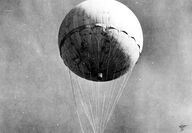
Following the Japanese surprise attack on Pearl Harbor on Dec. 7, 1941, and the American retaliation strike on Tokyo by the Doolittle Raiders in April 1942, Japanese leadership began searching for ways to ext end their bombing range across the Pacific Ocean. Soon, Alaska found itself on the front lines of an unusual, silent, aerial assault. From late 1944 to 1945, Japanese fu-go balloon bombs found their way to the Last Frontier's shores. The fu-go ("fūsen" is the Japanese word for balloon and...
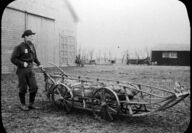
One intrepid postman set out from Nome in November 1905 with his team of dogs, led by a wolf, on a 15-month odyssey that would test his resolve and capture the public's imagination. Eli Smith, a seasoned mail carrier from Nome, embarked on an epic 8,000-mile trek to Washington D.C., all to settle a high-stakes wager. Born around 1855 in Wisconsin, Smith led a life of adventure long before his famous mushing expedition that would test the limits of human and canine endurance. He worked various...
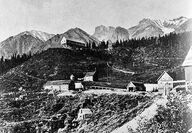
Do the spirits of miners who once called the Kennecott Copper Mine home still linger in the crumbling structures and rusting machinery? Some say the remote and isolated mining town, nestled in the rugged Wrangell Mountains and abandoned decades ago, has been a hotbed of paranormal activity over the years. The story of one of the richest copper mines in the world began in 1900 when prospectors Clarence Warner and "Tarantula Jack" Smith stumbled upon bright green cliffs on the slopes of the Kennic...
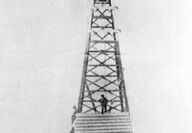
Generations of Alaska Natives made use of thick, black goo oozing out of the hills and beaches in the Last Frontier long before white men "discovered" oil. Sources say Northern Natives burned the tar-like chips, and Southeastern Natives used it for war paint. Oil shale was used in knives and labrets. The Russians knew of Alaska Peninsula oil seeps as early as 1860, but at this time whale oil was the important fuel. Oil from rocks was ignored. When Russian fur trade declined, the Russian...

A pint-sized, foul-mouthed, bear-hunting frontierswoman left her mark on the harsh Alaska wilderness. Weighing in at about 100 pounds, which included a bottle of homebrew she always had tucked inside her boot, Fannie Quigley was made for the tough life she carved out for herself near Denali. Born in 1870 to Czech immigrant farmers in Wahoo, Nebraska, Fannie grew up enduring blizzards, droughts, and plagues of locusts that instilled in her an unbreakable pioneer spirit. At just 16 years old, she...
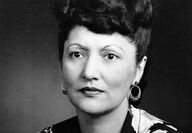
Elizabeth Wanamaker Peratrovich, born in the Southeast Alaska town of Petersburg on July 4, 1911, often is hailed as a heroine in the fight to end discrimination against Alaska Natives. When she saw a sign posted on the Douglas Inn across from Juneau in 1941 that said, "No Natives Allowed," she wrote to territorial Gov. Ernest Gruening. "The proprietor of Douglas Inn does not seem to realize that our Native boys are just as willing as the white boys to lay down their lives to protect the...

One of the most cherished traditions in the world of baseball began as a bar bet between two saloon owners at the turn of the last century when Fairbanks was a small gold rush town. The stakes? Bragging rights for the entire winter. According to local lore, the first "High Noon at Midnight Classic" was played on June 21, 1906, between the Eagle's Club and the California Bar. Led by Eddie Stoecker, who became known as "Father of the Midnight Sun Game," the score ended with the Eagles falling to...

Creamy, tangy ranch dressing, a beloved condiment that has become a staple in American households, has a fascinating origin story rooted in the rugged wilderness of Alaska. Its creation can be traced to the early 1950s when a plumber-turned-cowboy found himself cooking for hungry work crews in the remote Alaska bush. In 1949, Nebraska-born Steve Henson arrived in Anchorage to pursue a career as a plumbing contractor. While working on remote job sites, he took on the additional role of camp...
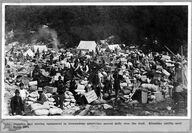
The Klondike gold rush, a pivotal moment in Alaska's history, is often associated with tales of hardship, adventure, and the pursuit of fortune. But recent research has uncovered a lesser-known aspect of this era: the prevalence of practical jokes among the prospectors and settlers-and not only on April Fools' Day. Practical jokes and pranks were a common way for miners and settlers to find amusement and pass the long hours of toil and hardship. The monotonous routine of mining life and the...
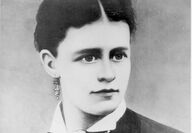
The Klondike Gold Rush of 1897-1898 drew thousands of hopeful prospectors north in search of fortune. While often overshadowed by tales of strong, rugged male adventurers, numerous courageous women also made the arduous journey, carving out unique roles and leaving an indelible mark on this pivotal chapter of North American history. While dancehall girls like the infamous Kate Rockwell – known as Klondike Kate-and prostitutes were indeed part of the Klondike landscape, they represent only a f...
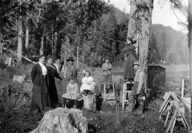
A giant pill bottle. A fighter jet. A Queen Elizabeth look-alike holding a corgi. What do these things have in common? They are all quirky ideas for an equally quirky event held each February during the Fur Rendezvous: Outhouse races down Fourth Avenue in Anchorage. Alaska's history with outhouses is as rich and colorful as the outhouses in this annual event. From essential facilities in undeveloped areas to the Fur Rendezvous races, outhouses have played a significant role in Alaskan culture....
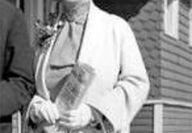
Known as the "Hostess of Fairbanks," Eva McGown dedicated her life to helping newcomers find shelter when housing shortages were the order of the day – particularly during World War II. Her empathy may have been due to her firsthand knowledge about the hardships and loneliness travelers faced on their quest to reach Alaska. Born Eva Montgomery in Northern Ireland in 1883, she had been communicating via letters with New York born Arthur Louis McGown, part-owner of the Model Café in the Golden He...

Mollie Walsh made a name for herself among the prospectors who flooded north during the Klondike Gold Rush. Her "grub tent" was a welcome sight to many miners who climbed the White Pass Trail in the late 1890s. One man carried such affection for her that he created a memorial that still stands today in the little town of Skagway. Born Mary Walsh in 1869 in Milwaukee, Wisconsin, the Irish lass and her laundry worker friend Maggie Allen packed their bags and headed north on board the Bristol in...
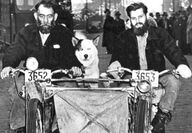
While workers completed the last portion of the Alaska-Canada Highway at Beaver Creek on Oct. 25, 1942, the idea to connect Alaska to the rest of the world was born many years earlier. Donald MacDonald, a locating engineer with the Alaska Road Commission, had dreamed for years of an overland coastal route to Alaska. It would run north from Seattle across British Columbia through the Yukon Territory to Fairbanks. MacDonald and a group of Fairbanks residents formed the International Highway...
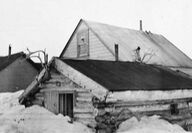
Called the Spanish flu, only because the Spanish press wrote about it, a virus took more than 500,000 American lives between 1918 and 1919 (estimates worldwide range from 20 to 100 million). And it came north, even though Territorial Gov. Thomas Riggs did everything in his power to keep it away from Alaska's shores. When 75 citizens of Seattle died from the flu during the week of Oct. 12, Riggs asked steamship companies to examine all passengers heading north on the final ships of the season...
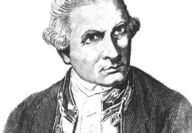
While the First Continental Congress presented its Declaration of Rights and Grievances to King George III in 1774, the Spanish government ordered Juan José Pérez to explore the west coast of America to latitude 60 degrees, "but not to disturb the Russians." The Russians were already in Alaska. Emilian Bassov, a sergeant of the military company of lower Kamchatka, and Andrei Serebrennikov, a merchant from Moscow, had formed a partnership in 1743 to hunt for sea otter along the Aleutian Chain. I...
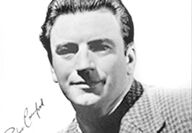
Gold miners in 1906 Fairbanks passed a fur cap for contributions to give the 7-year-old warbler. His only number was "In The Good Old Summer Time," but it pleased the whiskered sourdoughs in the frontier town. That was the beginning of a career that took the little singer far. Robert MacArthur Crawford grew up to become a professor of music, conductor of the Newark Symphony Orchestra and guest soloist for the National Symphony Orchestra in Washington, D.C. But his most enduring claim to fame...
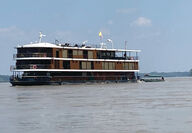
Part four in a four-part series. After exploring Peru and Quito to celebrate our 50th wedding anniversary, my husband and I flew to Coca. Known as the gateway to Ecuador's Amazon rainforest, the town sits at the confluence of the Napo and Coca rivers. That's where we climbed into a motorized canoe and spent two hours speeding down the Napo to our ship, Anaconda. From the moment we stepped aboard the 148-foot, 20-cabin ship, we were excited to see what Smithsonian Journeys and Audley Travel had...
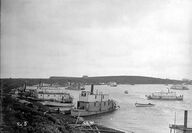
On June 25, 1897, the sleepy old Russian town of St. Michael awoke when Alaska Commercial Company's river steamer Alice arrived with 25 miners from Dawson carrying $500,000 among them in gold dust. That was enough to liven up just about any town. But the party wasn't over. Two days later, the P.B. Weare carried in another group of 60 successful men who staggered off that small steamer with more pokes of gold. Miners from both boats then transferred to the SS Portland and the SS Excelsior to...

Part three in a four-part series. After enjoying the first leg of our 50th wedding anniversary trip in Peru, my husband and I moved on to Quito, which marked the beginning of an adventure that immersed us in the rich history and vibrant culture of Ecuador. We were met by an English-speaking driver and guide, which Smithsonian Journeys and Audley Travel had arranged. They whisked us away to La Casona De La Ronda, a charming boutique hotel housed within a Spanish colonial mansion dating back to 17...
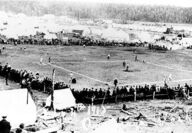
The infant town of Anchorage, only a few years old, had always been interested in America's favorite pastime when William F. Mulcahy, later known as "Mr. Baseball," blew into the lusty, young railroad town in 1922. Everyone turned out to watch the games played evenings after supper and weekends. As far back as 1916, Anchorage had a regulation baseball diamond, built by the Bridge Engineers, located in what was known as Recreation Park in the railroad yards north of Ship Creek. A press box, with...

Part two in a four-part series. As senior citizens, we initially worried our dream trip to Peru and Machu Picchu might be too demanding. Don, 80, and I, 72, weren't couch potatoes, but we weren't marathon runners, either. We had never used Smithsonian Journeys and Audley Travel before, and although the itinerary promised we would be met by a private driver and English-speaking guide at every stop, we couldn't help but wonder "what if...." After our plane landed in Lima on December 20, our...
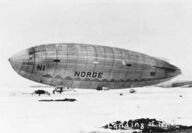
The people of Nome were planning a grand celebration in mid-May 1926. They'd decorated their fine city, set up committees, arranged receptions and lined up wagon teams to take school children to the airfield to see the landing of the dirigible Norge N-1. Slated to be the event to top all events, Nome residents were none too pleased when they learned that the huge craft-which had left Norway to fly over the North Pole a few days earlier-had missed their beautiful town and landed in Teller instead...

First in a four-part series. Ever since Don and I said "we do" in Fairbanks in November 1973, my sweetie and I have been talking about taking a trip to South America to see Machu Picchu, the Galapagos Islands, and the Amazon rainforest. When we saw an ad for a highly discounted Princess cruise from Los Angeles to Santiago, Chile, we decided to "Just Do It" for our 50th wedding anniversary. We then Googled how to get from Chile to our three goals and stumbled across Smithsonian Journeys. The...
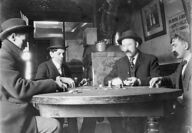
The seeds of Alaska's biggest city were planted in April 1915 when the federal government authorized construction of a new railroad to connect Interior Alaska to tidewater in Seward and hundreds of hopeful workers made their way north to the construction camp on Ship Creek. And although the government tried to keep a handle on illegal activities in its new railroad town, prostitution, gambling and bootlegging flourished. One didn't have to go far to find the vice of his choice in Anchorage,...